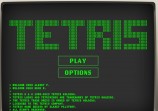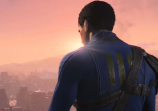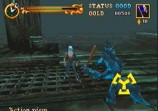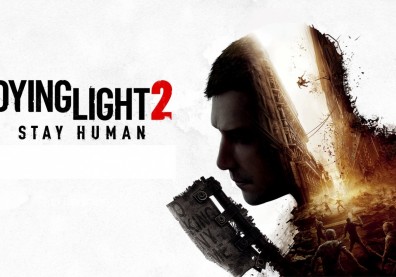I ran as soon as the high-pitched shriek split the night sky, knowing I would only have a moment's head start. It's one thing to take on a few Biters, but the Volatiles that emerge after dark should not be faced head on. The roar meant I was spotted, and the grunting and clamoring behind me was growing louder with every second. The soft blue glow of the UV lamps around the safe house up ahead beckoned me onward as my energy ran low, a race unfolding against both myself and the undead nightmare close behind.
With only twenty meters to go, I swiveled my head back to see how much ground my pursuers needed to cover. Two muscle-bound creatures were only a few paces behind, but the walls of the safe house were approaching quickly. One claw suddenly raked across my back, causing me to stumble but not knocking me off my stride. With weakened hands I hoisted myself onto the roof of a hovel, then leapt fluidly onto the adjacent wall of the compound. The Volatiles halted their run at the burning light of the UV fixtures, screaming in protest before disappearing back into the night.
***
Dying Light is an open world survival-horror game set in the contained, zombie-infested Middle Eastern city of Harran. You play as Kyle Crane, a contractor hired by the GRE to recover a file from within the city's quarantined walls. As you may expect, the plan goes off the rails quickly once you're airdropped inside, and you begin to learn that your mission is not quite what it appeared.
This is developer Techland's second take on a zombie action franchise, having released Dead Island in 2011 to decidedly mixed reception. The game, in the end, did not live up to its billing or expectations, though its general framework allowed for some good moments. This isn't a review of the last generation title, but of its spiritual evolution: Dying Light is a much better, expertly designed game that succeeds in almost every area in which Dead Island fell short. It comes off as the game Techland was aiming to make the first time around, and is simply a lot of fun to play.
The focus, and differentiating feature of Dying Light compared to the hordes of other zombie titles, is its running and climbing mechanics. The parkour action provides thrilling moment-to-moment gameplay and helps craft scenarios such as the one described above. During the day, relatively harmless groups of zombies amble through the streets, only really causing a serious threat if you stop and get wrapped up in a prolonged fight. The game encourages you to keep moving, in part because it helps you stay alive, and partially because it's very satisfying to navigate Harran. There's a main story to follow (which I'll expand on below) as well as scattered loot and plenty of optional side quests.
All of these objectives can require you to travel hundreds of meters across the city, and the free-running allows you to do that swiftly. Playing on PlayStation 4, pressing R1 when looking at (or jumping toward) an edge or ledge grabs hold of it, allowing you to either pull yourself up, shimmy in either direction, or spring to another handhold. Sprinting is handled by clicking in the left stick, and with the combination of these two buttons, you can spring from rooftop to rooftop in a hurry. Crane gains Agility experience and levels up simply by climbing ledges and performing tricks, which only motivates you to keep on going. Unlockable skills in that category allow you to run for longer, leap off the heads of zombies, dropkick enemies, and generally improve your skills as a Runner.
The free-running and climbing abilities are at the core of what makes Dying Light fun to play. The open map is designed in a way that makes you feel clever, offering just enough options to get you where you need to go and challenging you to pick the most efficient path across rooftops and railings. Dying Light even encourages this in co-op play (done simply by joining into someone else's game or allowing them into yours) with dynamically-prompted mini games. If one of you sets an objective marker, you will both have the option of joining an impromptu race, which the game will track with a timer and score. Similar events occur for collecting the most loot and killing the most zombies, and it's an intelligent feature that adds some competitive spirit to a cooperative mode. Co-op play saves any progress you make together in your singelplayer campaign, allowing you to continue where you left off if your friend (or a stranger) departs.
Some of the game's story mission and side quests will additionally put you through some surprisingly smart climbing puzzles, which force you to consider your path carefully. It's not just blind zombie smashing and roof-running in Dying Light--it's clear that every corner of Harran's slums and more refined Old Town corridors have been designed with considered intent. Those traversal features may be what drives Dying Light forward, but it's also not just shallow running and jumping. Joining the Agility tree are Survivor and Power skills, which govern crafting (along with other tricks) and combat skills respectively. These also level up through use, but they should all end up advancing at roughly the same rate. You begin to feel more powerful as you play and unlock new abilities, almost as if you, the player, are the one who has gotten better at surviving in this environment. The city's layout will eventually become second nature, and you'll be springing between the closest platforms like a seasoned veteran later in the game.
The game's name comes into play with the day and night cycle, which dramatically alters your ability to move around Harran. At night, not only can zombies surprise you in the dark, but deadly Volatiles stalk the terrain. You're warned several times about approaching nightfall each evening over the radio, your associates urging you to get back to the Tower or into a safe house. Volatiles are extremely difficult to kill, and can take you down in a few swings. Genuine panic strikes when these super enemies begin to give chase, and your survival is likely dependent on proximity to a safe house. Intense, speedy pursuits across roofs and over railings will take place once they begin to hunt you down, and it tests your skills with the controls and knowledge of Harran's streets and alleys. Safe houses and traps through the city are adorned with ultraviolet lights, which burn Volatiles and keep them at bay. Make it into the welcoming blue UV glow, and you've survived.
As for the main story, Crane becomes embroiled in a three-sided conflict between different factions (as if the zombies weren't enough), and is initially asked to perform a series of distasteful tasks. He voices his displeasure often and cracks a few jokes that create a definite, if somewhat plain, character. The story is engaging enough, even though its twists and turns are sometimes obvious and standard. The voice acting of pretty high quality across the board, though lip synching is perhaps some of the worst I've seen in a recent game. Dying Light's narrative did compel me to play along, and there are some pretty tense moments.
The biggest disappointment is the game's main villain, Rais. He set himself up as the local warlord and leader, and it seems Techland was aiming for a character somewhere along the psychopathic nature of Far Cry 3 antagonist Vaas. The writers ended up overshooting it, though, and Rais is nothing more than an indiscriminate sadist--killing at random, bent on destruction, and falling short of believable. Crane himself, similarly, is fairly reminiscent of Far Cry 3's protagonist Jason.
The story missions' best aspect, other than progressing the game along, is that it provides new context for enjoyable use of game's great action controls. Jumping on zombies and smashing through hordes is fun on its own, but it becomes additionally rewarding when you're breaking into an enemy compound or rushing to save someone. You can engage in a mission at any time, allowing you to choose between open world exploration or story progression. This means unlimited open world hours can be spent hacking apart zombies, if that's what you desire, and beating up enemies is a lot of fun--even if it takes a back seat to the movement.
There are a variety of weapons to find or buy in Dying Light, from quick slashing knives and sickles to medium strength crowbars and heavy two-handed axes. You can upgrade all of these with stat increases, and modify them with elemental damage and effects like knock down. Swinging a two-handed axe is incredibly satisfying, and the game occasionally goes into slow motion as blood flies and body parts are cleaved in two. There's sometimes also an x-ray effect, which shows the impact of the weapon on your enemy's skeleton--nonsensical, but cool nonetheless. Guns become common later in the game, and serve as the quickest way to take down the large Goon zombies. The rifles are a good last resort, but stronger Viral zombies come running at the sound of gunshots, so it's safest to use them sparingly. There are just a couple of variations of pistols, rifles, and shotguns, but melee weapons are the game's focus and the shooting feels a bit loose. There are some sections that pit you against human enemies which promote the use of firearms, though, and Techland largely pulls off the change of pace successfully.
My complaint in regard to the weapon system revolves around the durability rating: weapons decay as you use them, and can only be repaired a few times. This makes creating a 'favorite' difficult, and even though you'll keep acquiring better weapons, you'll likely limit the use of your best ones in an effort to save them. I understand that it's more realistic, but it's a counterintuitive mechanic that I've never really enjoyed in any game. Whether it's being forced to create a new pick in Minecraft or breaking your bow in The Elder Scrolls, being punished for simply using your weapons and having to babysit durability meters isn't my idea of fun. Removing the limit on the number of times you can repair a weapon in Dying Light would go a long way, but it's somewhat irritating as things stand.
Dying Light will last you dozens of hours, offering challenges scattered around the map to supplement the already lengthy main story and side quests. You'll often be challenged to hack or shoot a certain number of zombies within a time limit, or perform a series of timed stunts. These are fun distractions, and the combat-related games allow you to let loose on huge hordes with strong weapons. There's also a competitive multiplayer mode, Be The Zombie, which was originally planned as paid DLC. You can drop in on anyone's singleplayer campaign if their game is open as a Hunter zombie, which combines several Left 4 Dead-like powers. Other survivors can join the opposing team, and it's your job as the Hunter to stop them from destroying several zombie nests. It's a fun alternative to the main game, and swinging from rooftops (using similar controls to the web-slinging in Spider-man titles) before pouncing on survivors below is very satisfying.
Dying Light is a (perhaps surprisingly) well-designed game, with greater depth found in its individual parts than you might have expected. It's easy to be dismissive at first glance--some might say it's just a new Dead Island, or it's only uninspired zombie hacking--but clear consideration went into creating something that feels new, and fun. I genuinely enjoy spending time in its world, which looks good visually and is complemented by a fitting, eerie score and great sound design. The story is predictable, and the main villain disappointingly insane, but it's still enjoyable trappings for an open world game. On the back of its great free-running and satisfying melee combat, Dying Light provides a refreshing experience that betters the majority of its zombie contemporaries.
***
Dying Light was reviewed on the PlayStation 4 via a code provided by Techland. It's also currently available on PC and Xbox One.









